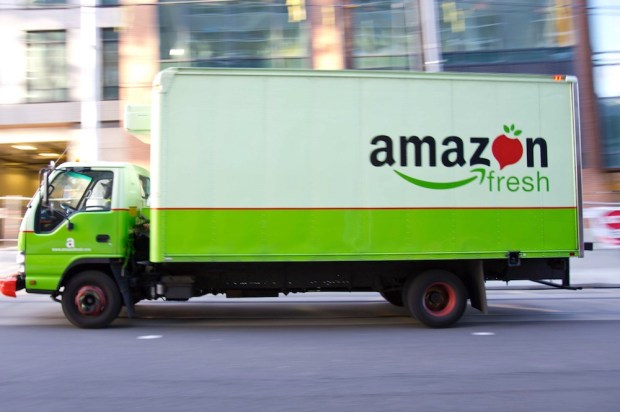AmazonFresh Goes Stale – What Now?

It seems AmazonFresh is past its expiration date in certain markets.
In case you missed it: The eCommerce giant announced on Friday (Nov. 3) that it would be phasing out the grocery delivery service in parts of New Jersey, Pennsylvania, Delaware, Maryland, California, New York, Connecticut, Massachusetts and Virginia.
More specifically, it’s phasing out service in suburban areas. AmazonFresh delivery will still be available in urban centers like New York City, L.A. and Chicago.
The move confirms analysts’ suspicions that grocery delivery in non-urban areas is too expensive for an eCommerce company to sustain without high subscription fees or a cost-reduction model to boost margins. Apparently, $14.95 per month, even stacked on the requisite $99 annual Amazon Prime membership, didn’t quite cut it.
While Amazon is big enough to take a loss today in the name of tomorrow’s gain, it’s been a decade since the company first introduced its Fresh service. It was five years before the service could even expand beyond Seattle, home of the company’s headquarters. Today, the program still has yet to gain enough traction to justify the investment, at least in less populous areas.
Amazon gave it a good effort, but the company is also shrewd enough to throw in the towel when something isn’t working – especially in the midst of the ongoing grocery wars, with so many others clamoring to provide the same basic service to a consumer base that only sort of wants it.
The question is, why now? Many are linking the move to strategies around Amazon’s $13.7 billion acquisition of the brick-and-mortar organic grocer Whole Foods, but a company spokesperson told Recode that wasn’t the case. In fact, the eCommerce giant’s activity since the acquisition would suggest that it planned to continue in the grocery delivery space for some time to come.
As one example, Amazon inked a deal with Booths earlier in October to deliver the family-owned business’s ready meals, cheese and deli products to customers across London, Surrey, Hampshire and other parts of England. A week later, it partnered with eMeals to deliver customized meal kits based on individual shopping lists.
After that, Amazon slashed seller fees to help grocers list more products and keep prices competitive on its grocery platform. And as recently as last week, the company partnered with supplier Nurture Burger to deliver grass-fed ground beef to customers in Dallas-Fort Worth.
Of course, phasing out some markets doesn’t mean these partnerships and business moves were for naught, but it does rather seem like the company was going after the AmazonFresh venture full steam ahead – and then, very suddenly, it wasn’t.
The best explanation anyone has heard yet came from Amazon’s Q3 earnings call, during which CFO Brian Olsavsky laid out some of the company’s hopes following the Whole Foods acquisition (though again, the company says the AmazonFresh phase-out is unrelated to that).
“There’ll be a lot of work together between Prime Now, AmazonFresh, Whole Foods, Whole Foods products on the Amazon site [and] Amazon Lockers at the Whole Foods stores,” Olsavsky said, as reported by Quartz. “There’ll be a lot of integration, a lot of touch points and a lot of working together as we go forward.”
“We are experimenting with a lot of formats,” Olsavsky went on. “I think that Whole Foods really gives us a, you know, vast head start on that and a great base. And a great team to work with who has a lot of history … they probably have 10 to 20 years of learning that we don’t have and wouldn’t have. So, we’re really excited about that, and I think working together will bring our different strengths to the table and … build on behalf of customers.”
Essentially, it seems the company is looking for the most opportune ways to weave itself into customers’ everyday, physical lives – so we can be sure that, if AmazonFresh isn’t it, the industry giant will find another way before too long, and that probably would have been the case with or without Whole Foods in the picture.
Customers in markets that are closing will not receive deliveries past Nov. 30.
